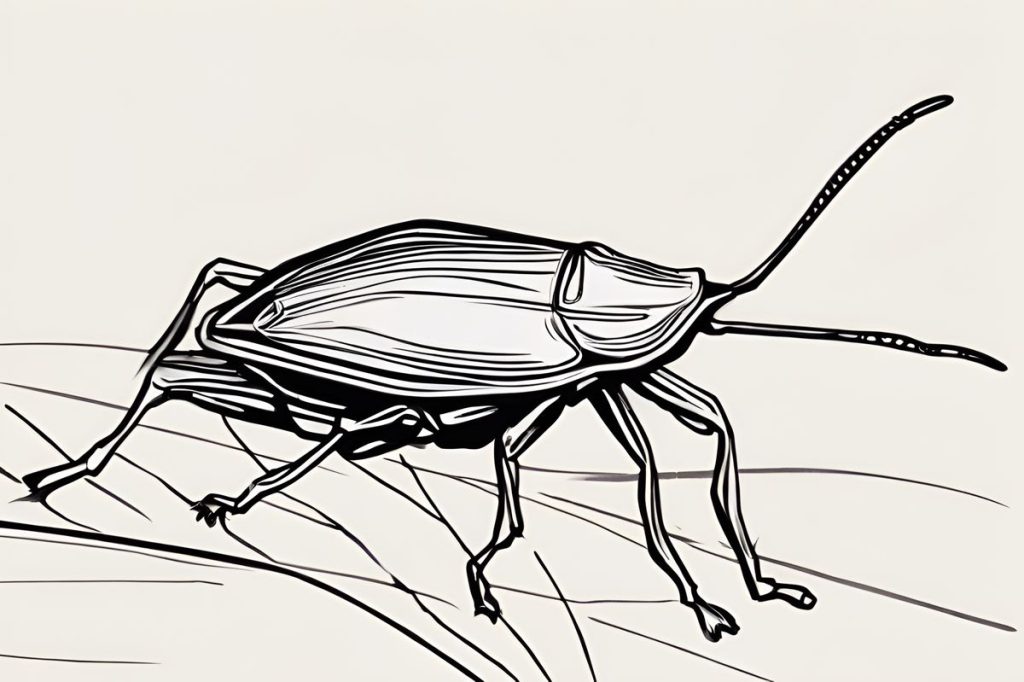The giant water bug, known as the toe-biter, has been spotted for the first time in Cyprus, raising scientific interest in its impact on the local ecosystem. This unexpected sighting underscores the importance of citizen science in detecting species migration and calls for further research into the insect’s behavior and potential establishment on the island.
What is the significance of the giant water bug’s appearance in Cyprus?
The giant water bug’s appearance in Cyprus is significant as it marks the first time this predatory insect, also known as the toe-biter, has been reported on the island. This unprecedented sighting has sparked scientific interest in studying its potential impact on the local ecosystem and highlights the importance of citizen science in detecting species migration.
A New Insect Predator Emerges
On the sunny shores of Cyprus, an unexpected visitor has made its appearance, prompting both curiosity and caution among the locals. A giant water bug, often nicknamed the toe-biter for its painful bite, has been identified for the first time on this Mediterranean island. With established populations in neighboring countries like Greece and Turkey, its presence in Cyprus is a new phenomenon that has caught the attention of scientists and swimmers alike.
The insect, which thrives in lakes and slow-moving waters, has become the subject of a study by a dedicated team of experts. Led by Michalis Hadjikosnstantis of the Cyprus Natural Heritage and Biodiversity Protection Society, with the collaboration of Yiakoumis Giortzis from the agriculture ministry and Kadir Boğaç Kunt from the Cyprus Wildlife Research Institute, the team aims to understand the implications of this new arrival.
Citizen Reports and Scientific Investigations
The discovery was propelled by numerous sightings along the eastern coast during the warmer months of 2020 and 2021. The giant water bug was first brought to public attention when beachgoers began sharing images of the impressive insect on social media. These initial reports were critical in prompting a more detailed scientific inquiry into its appearance and behavior.
Scientists scoured internet platforms for additional sightings and collected samples for closer examination. Their research, highlighted in Travaux du Muséum National d’Histoire Naturelle Grigore Antipa, delves into the characteristics of this formidable predator known for hunting a wide range of prey, including fish and small aquatic animals. Its size alone, reaching up to 12 cm in diameter, makes it a noteworthy and intimidating presence in its habitat.
The Role of Citizen Science
The occurrence of the toe-biter in Cyprus illustrates the valuable role of citizen science in modern ecological research. Enthusiasts and ordinary citizens, equipped with the power of the internet and social media, have become vital observers in the early detection of species migration. Through their active participation, they contribute significantly to the tracking and study of such species, which in this case, has led to a better understanding of the water bug’s movements.
The combined efforts of the public and the scientific community resulted in the recording of seven separate sightings, with two specimens collected for detailed morphological study. These efforts underline the potential for collaboration in monitoring new species and the importance of public awareness in environmental conservation.
Questions on Migration and Establishment
The sudden emergence of the toe-biter in Cyprus poses questions about its migration and potential establishment in new territories. The researchers speculate that the bugs may have been carried over from neighboring regions through natural forces such as wind or sea currents or possibly due to shifts in their native habitats that prompted relocation.
While the sightings are numerous, it’s too soon to conclude whether the giant water bug has established a permanent presence on the island. It remains a subject of interest and concern, warranting further investigation to determine the long-term impact on the local ecosystem.
The public is advised to exercise caution around freshwater bodies and report any additional sightings to local environmental agencies. The collective vigilance can lead to timely responses and strategies to understand the ecological balance and preserve the island’s rich biodiversity.
What is the significance of the giant water bug’s appearance in Cyprus?
The giant water bug’s appearance in Cyprus is significant as it marks the first time this predatory insect, also known as the toe-biter, has been reported on the island. This unprecedented sighting has sparked scientific interest in studying its potential impact on the local ecosystem and highlights the importance of citizen science in detecting species migration.
How did citizen reports contribute to the discovery of the giant water bug in Cyprus?
Citizen reports played a crucial role in the discovery of the giant water bug in Cyprus. Beachgoers shared images of the insect on social media, prompting further scientific investigation. Their active participation helped in tracking the water bug’s movements and contributed to a better understanding of its presence on the island.
What are some characteristics of the giant water bug that make it a formidable predator?
The giant water bug, also known as the toe-biter, is known for its predatory nature and impressive size. It can grow up to 12 cm in diameter and is capable of hunting a wide range of prey, including fish and small aquatic animals. Its presence in freshwater bodies raises concerns about its potential impact on the local ecosystem.
What is the role of citizen science in monitoring species migration and new arrivals?
Citizen science plays a vital role in modern ecological research, especially in monitoring species migration and new arrivals. By actively participating in reporting sightings and sharing information, citizens contribute to the early detection of species movements. This collaboration between the public and the scientific community enhances our understanding of ecological changes and supports conservation efforts.

